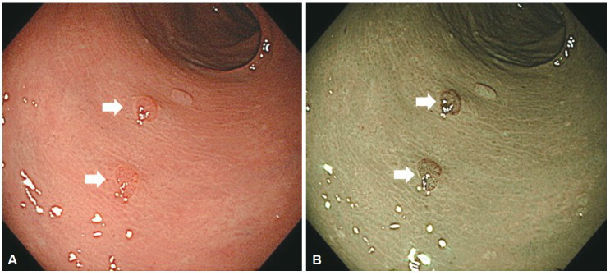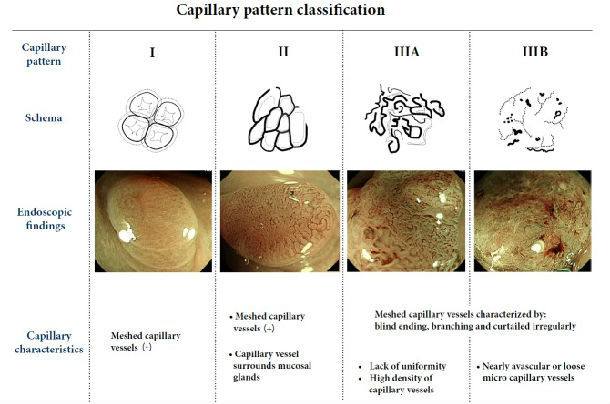学术前沿
发表者:常玉英 人已读
Clin Endosc. 2015 Nov;48(6):491-7. doi: 10.5946/ce.2015.48.6.491. Epub 2015 Nov 30.
Polyp Detection, Characterization, and Management Using Narrow-Band Imaging with/without Magnification.
Utsumi T1, Iwatate M1, Sano W1, Sunakawa H1, Hattori S1, Hasuike N1, Sano Y1.
Author information
Abstract
Narrow-band imaging (NBI) is a new imaging technology that was developed in 2006 and has since spread worldwide. Because of its convenience, NBI has been replacing the role of chromoendoscopy. Here we review the efficacy of NBI with/without magnification for detection, characterization, and management of colorectal polyps, and future perspectives for the technology, including education. Recent studies have shown that the next-generation NBI system can detect significantly more colonic polyps than white light imaging, suggesting that NBI may become the modality of choice from the beginning of screening. The capillary pattern revealed by NBI, and the NBI International Colorectal Endoscopic classification are helpful for prediction of histology and for estimating the depth of invasion of colorectal cancer. However, NBI with magnifying colonoscopy is not superior to magnifying chromoendoscopy for estimation of invasion depth. Currently, therefore, chromoendoscopy should also be performed additionally if deep submucosal invasive cancer is suspected. If endoscopists become able to accurately estimate colorectal polyp pathology using NBI, this will allow adenomatous polyps to be resected and discarded; thus, reducing both the risk of polypectomy and costs. In order to achieve this goal, a suitable system for education and training in in vivo diagnostics will be necessary.
KEYWORDS:
Colonoscopy; Diagnosis; Magnifying endoscopy; Narrow band imaging; Polyps


本文为转载文章,如有侵权请联系作者删除。本文仅供健康科普使用,不能做为诊断、治疗的依据,请谨慎参阅
发表于:2016-03-16